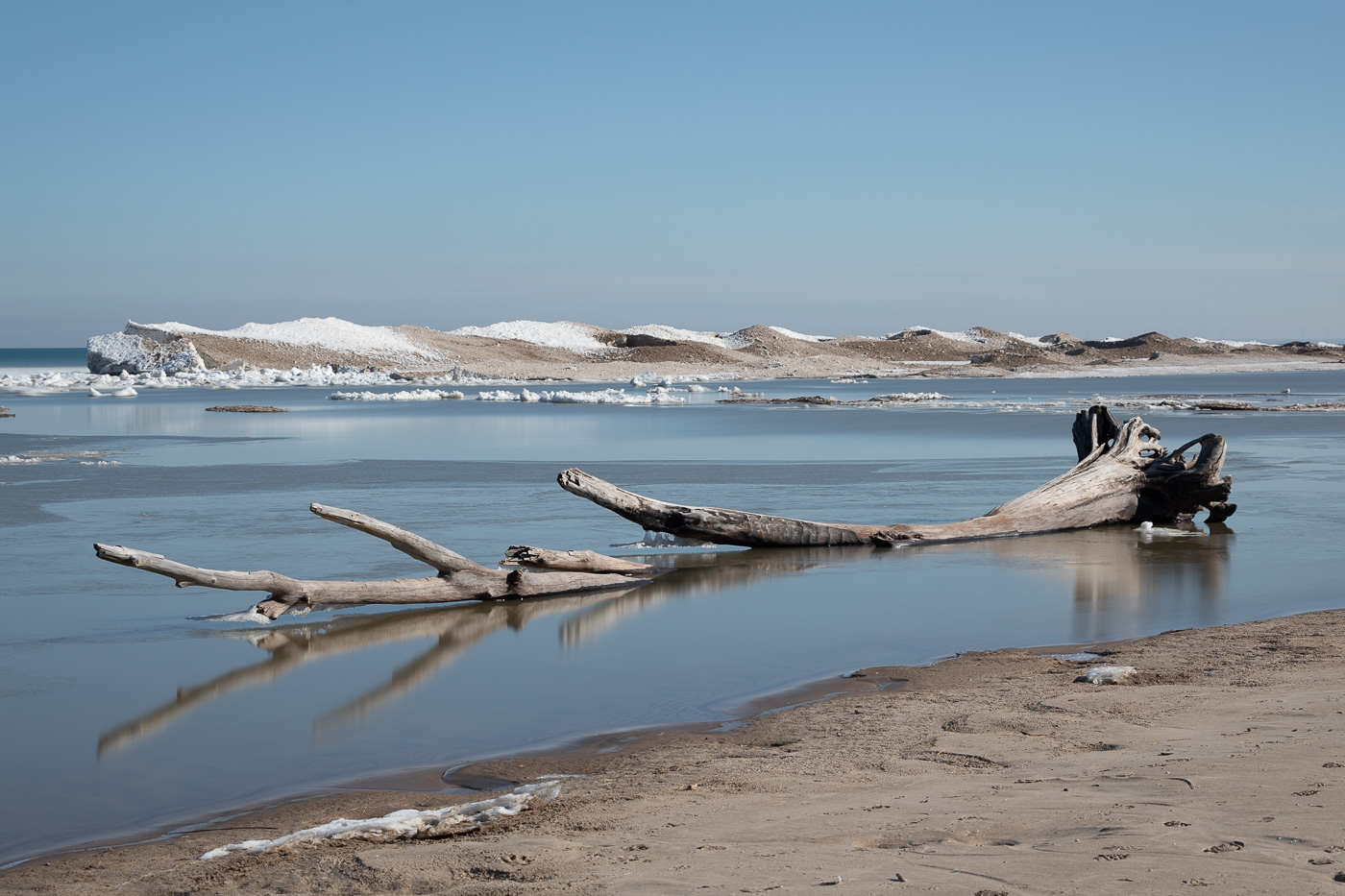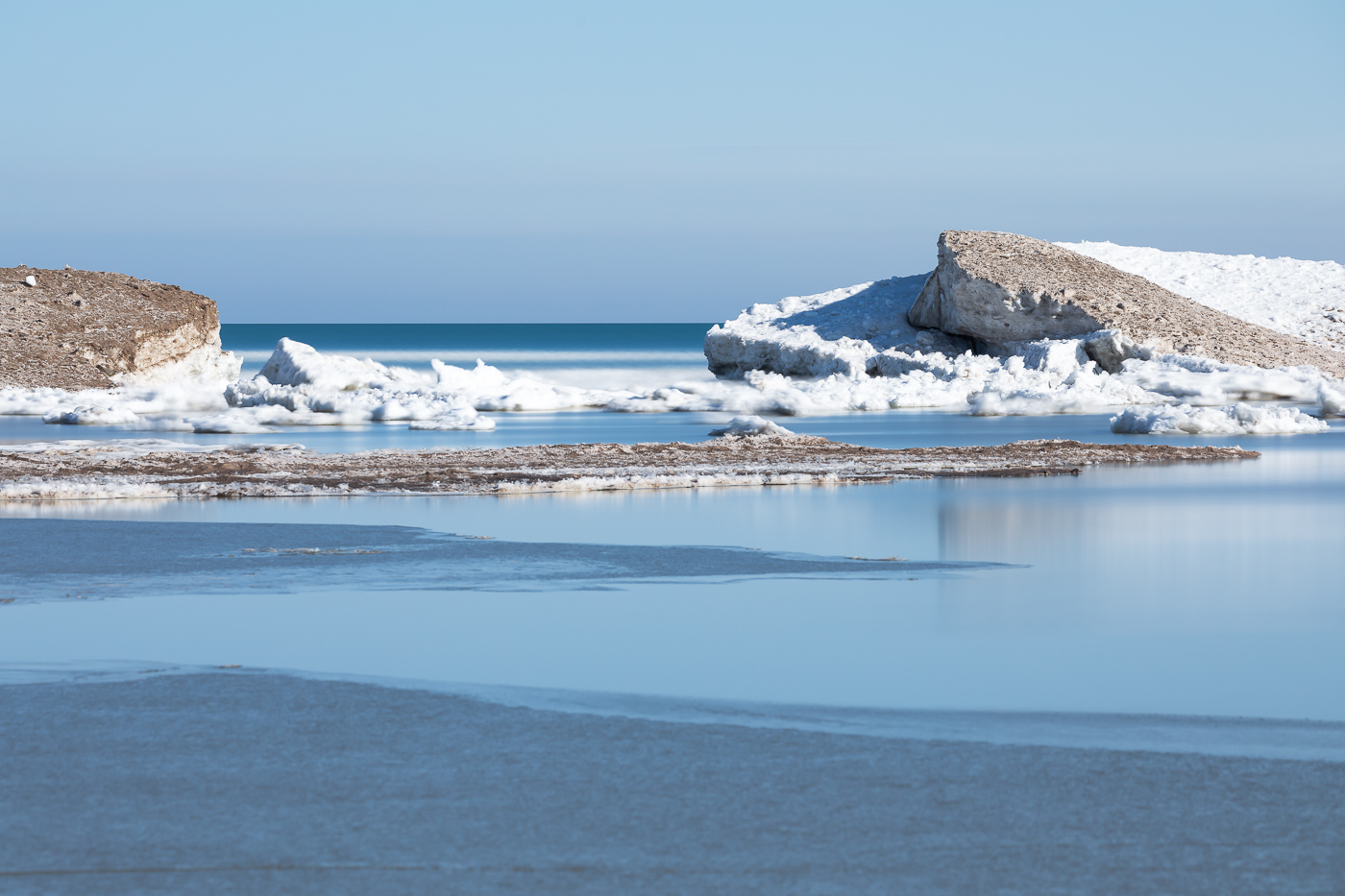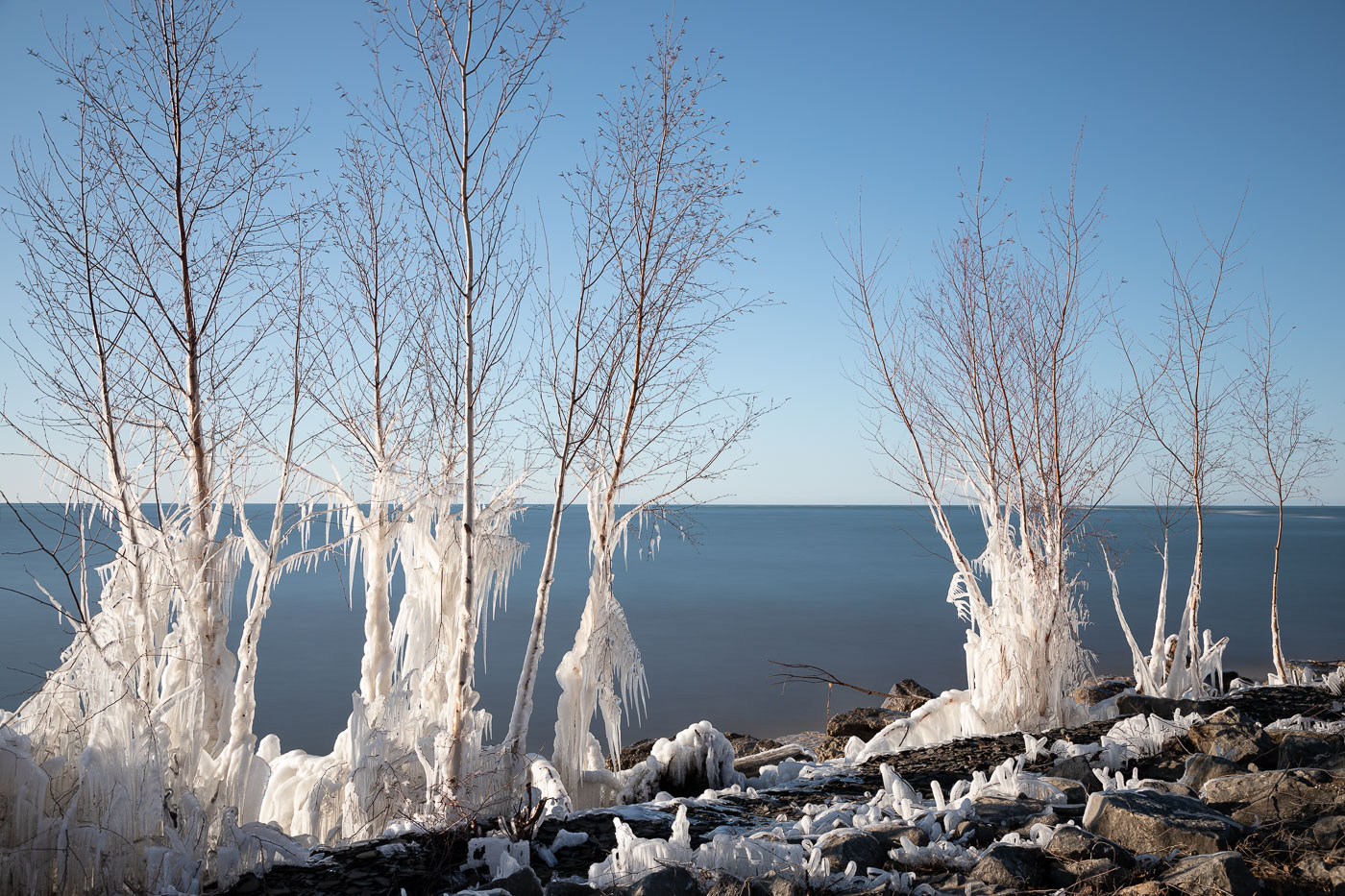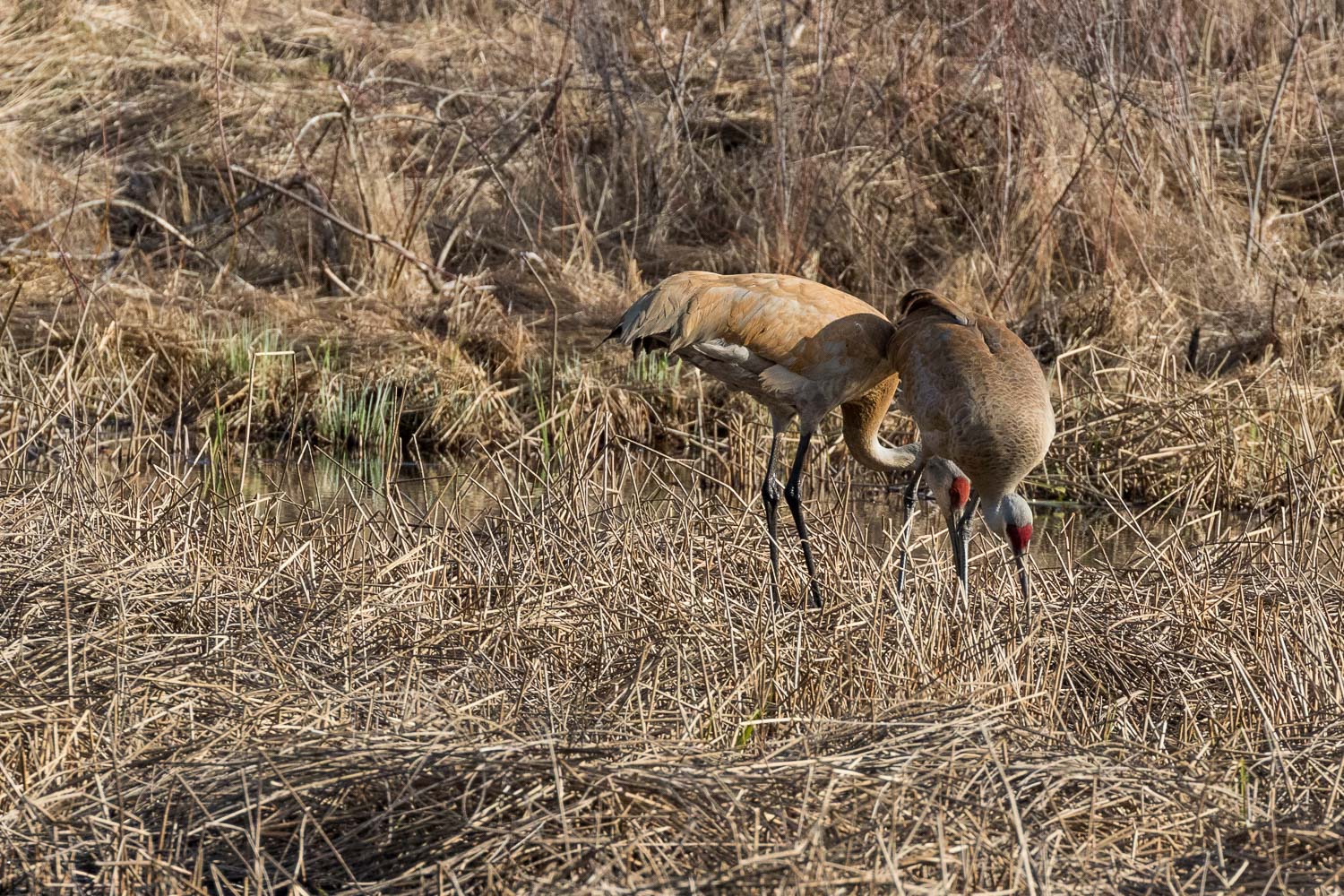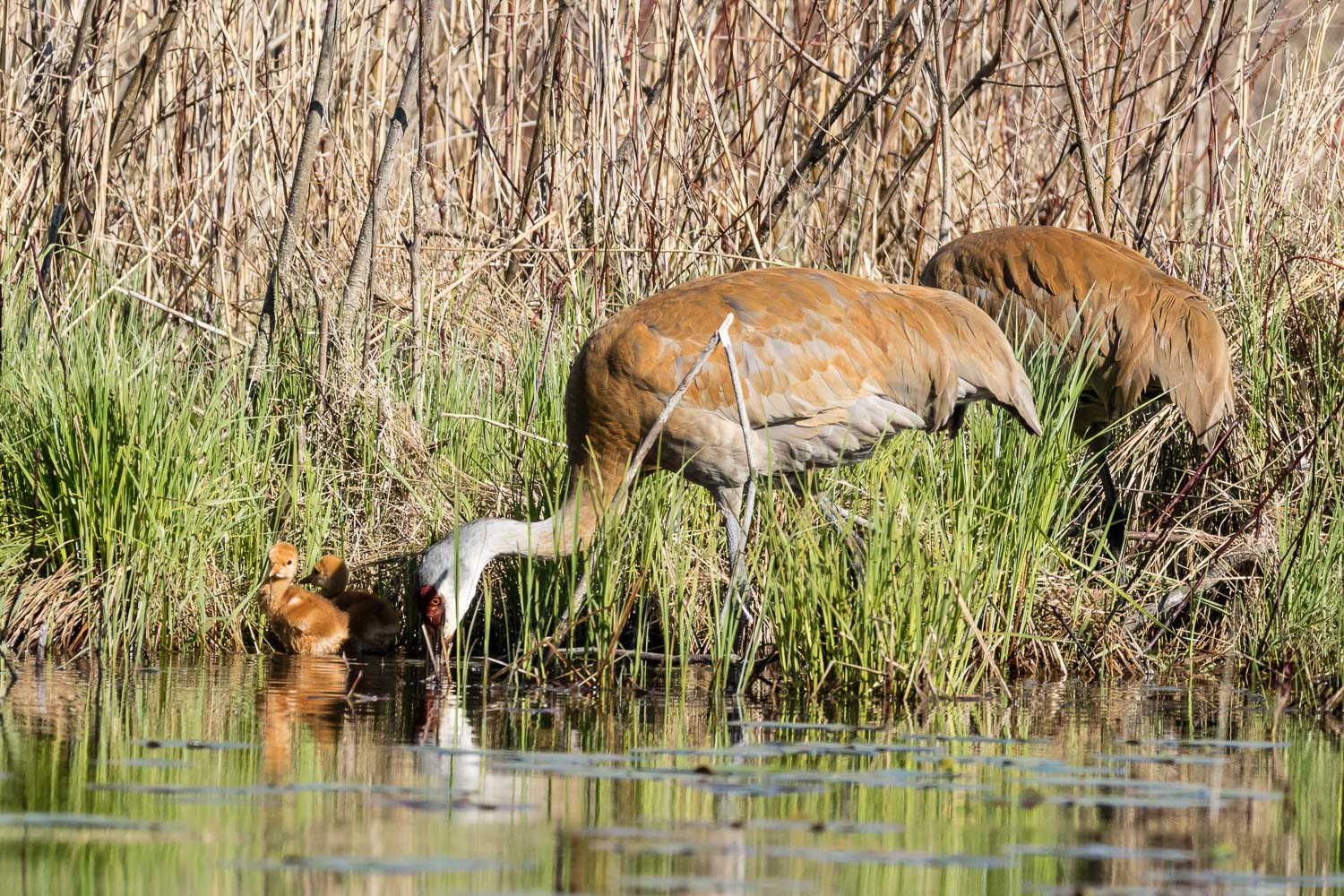Winter started its annual retreat around here about a week ago. And with it the ice on the lake began to break up and move out. Open patches of water appeared and the ice volcanoes shrank a bit. And blue skies - something we haven’t seen much of this winter. But weather changes quickly, as I recently experienced. These images were taken over a five-day period, in different light, in areas close to where I live. All were taken around water and ice that changed on a daily basis.
A large piece of driftwood sitting close to the beach in the open water. But it didn’t stay that way for long. Just five days later strong winds, high waves and cold weather brought in more ice and water and that large log was buried once more.
Looking out from the shore, a close up the ice volcanoes. The white bands, and soft edges on some of the ice is due to the combination of moving ice and a two minute shutter speed.
The change in weather also affected the river cut. Completely open just a few days ago, it’s full of ice once more. It won’t last long, the warmer weather will quickly melt it, but for now this is what we have.
Driftwood comes and goes. It’s been in the water - sometimes already on the beach, often coming in with the winds. But those trees are no longer alive and the harsh weather can’t hurt them. But this small tree, once on the beach, is now surrounded by water and lots of wind. Will it survive? I hope so.
The living trees growing near the edge of the lake face harsh weather in the winter and early spring. Ice builds up on the branches, melts, and builds up again. Yet the trees somehow survive. I find their resilience - and their beauty - comforting.
I’m captivated by driftwood. Once living trees, possibly part of a forest, transported from parts unknown, they now appear as natural sculptures, formed by time, wind and water. Their shapes and textures are remarkable.
There was a lot of ice at Grand Bend this year. It is starting to melt but it will take time and some warmer weather before it’s all gone. But people are already there, watching the ice recede, and looking forward to the summer that’s not too far off now.
Weather changes everything. The light makes a difference, as does the wind. And ice - well that’s a whole story on its own. Ice is powerful, it moves whatever’s in its path And when it leaves, what’s left behind is different than what was there before.
